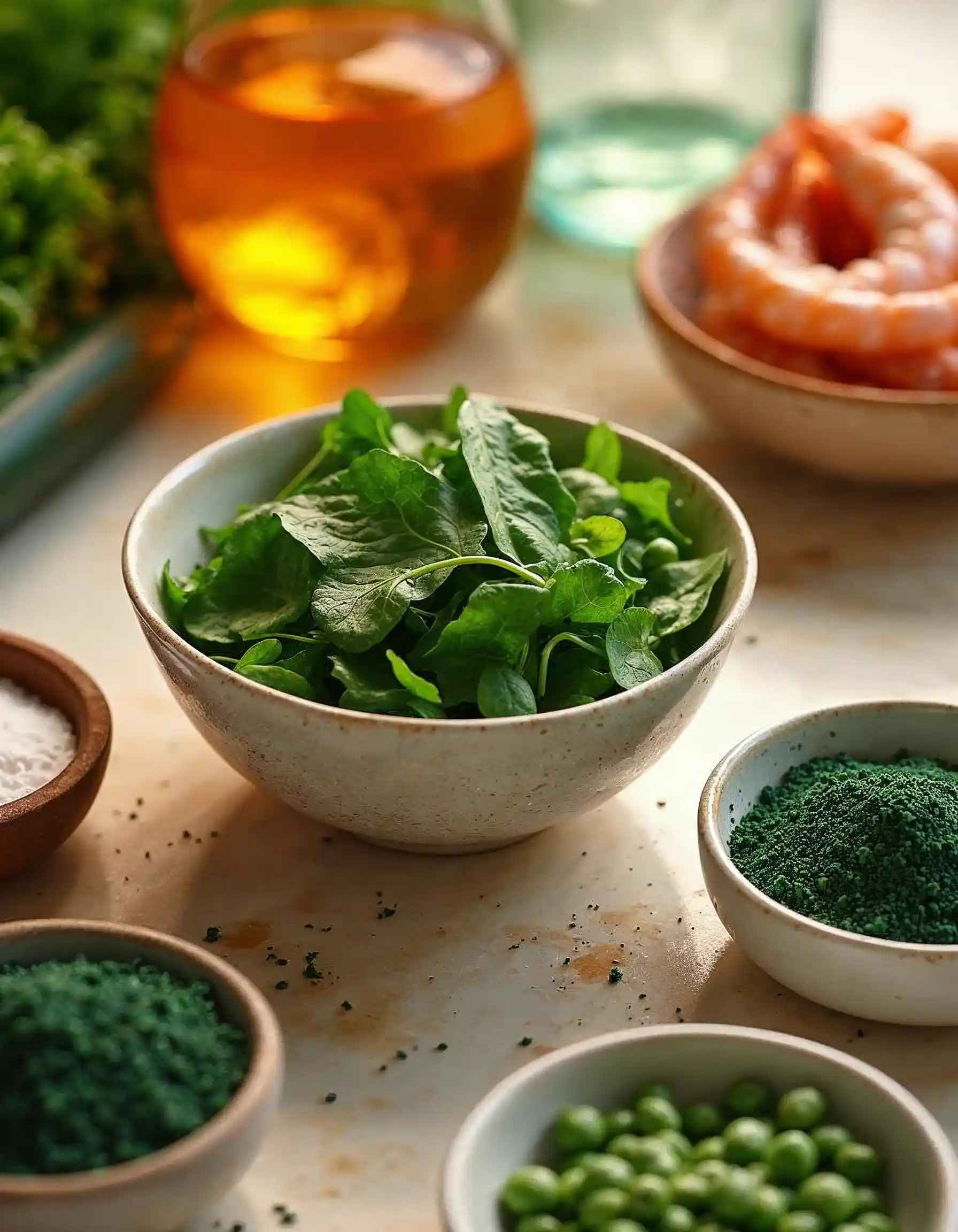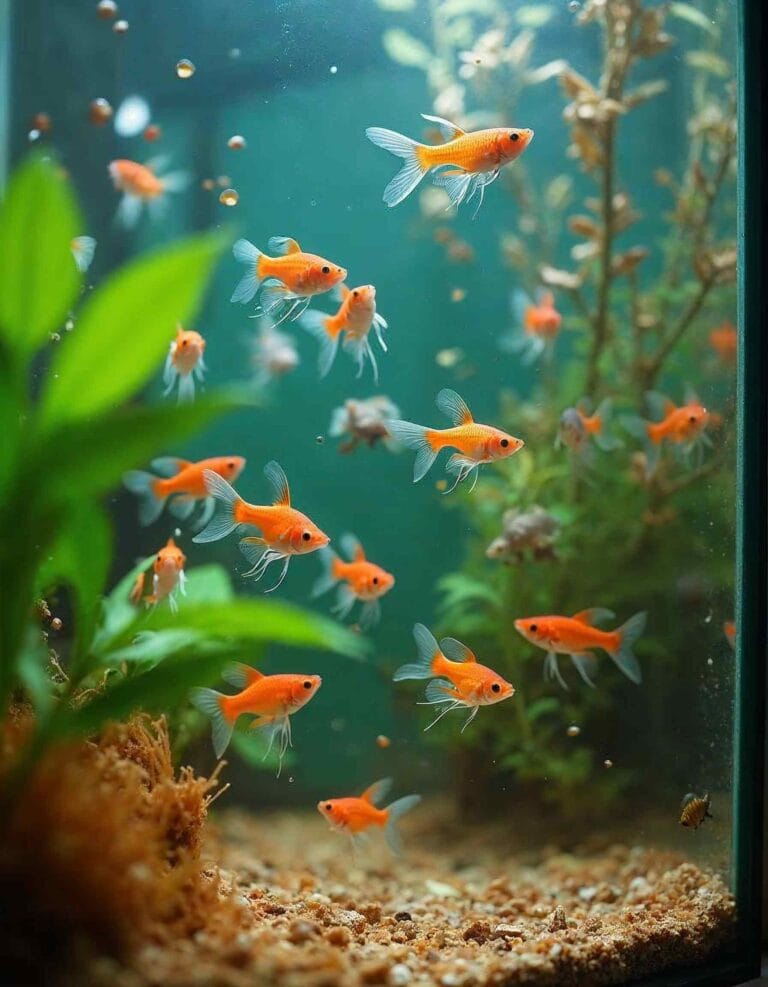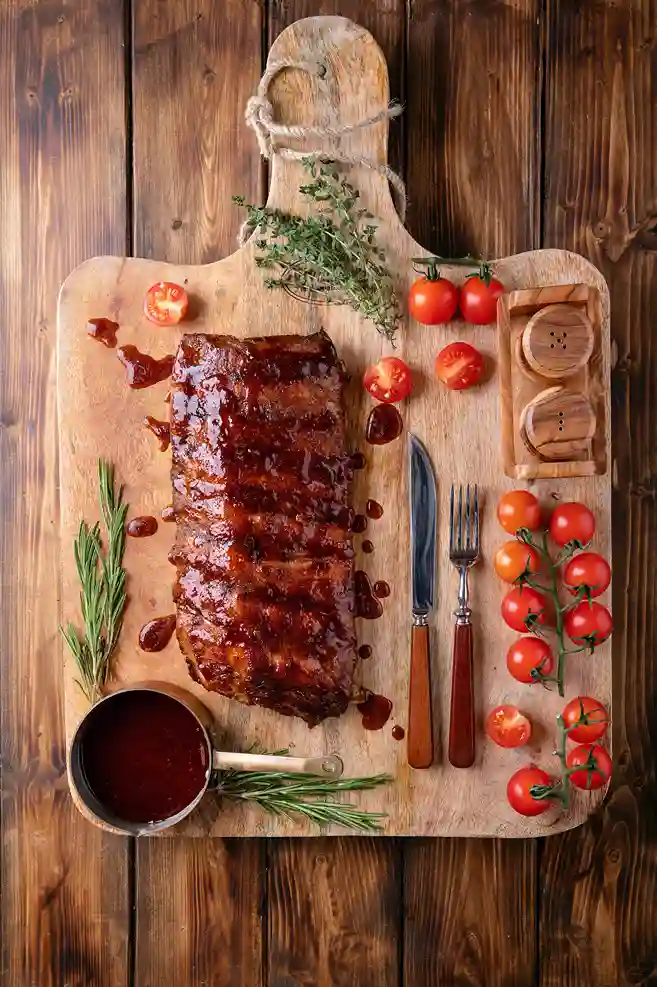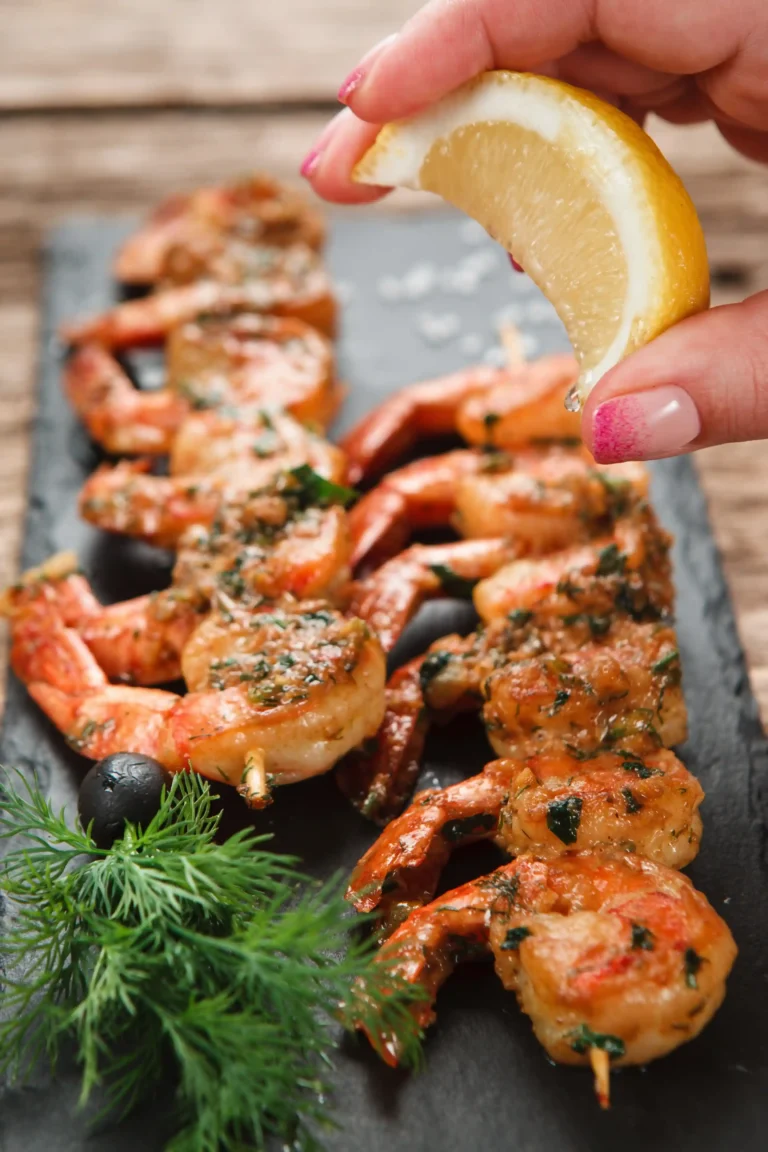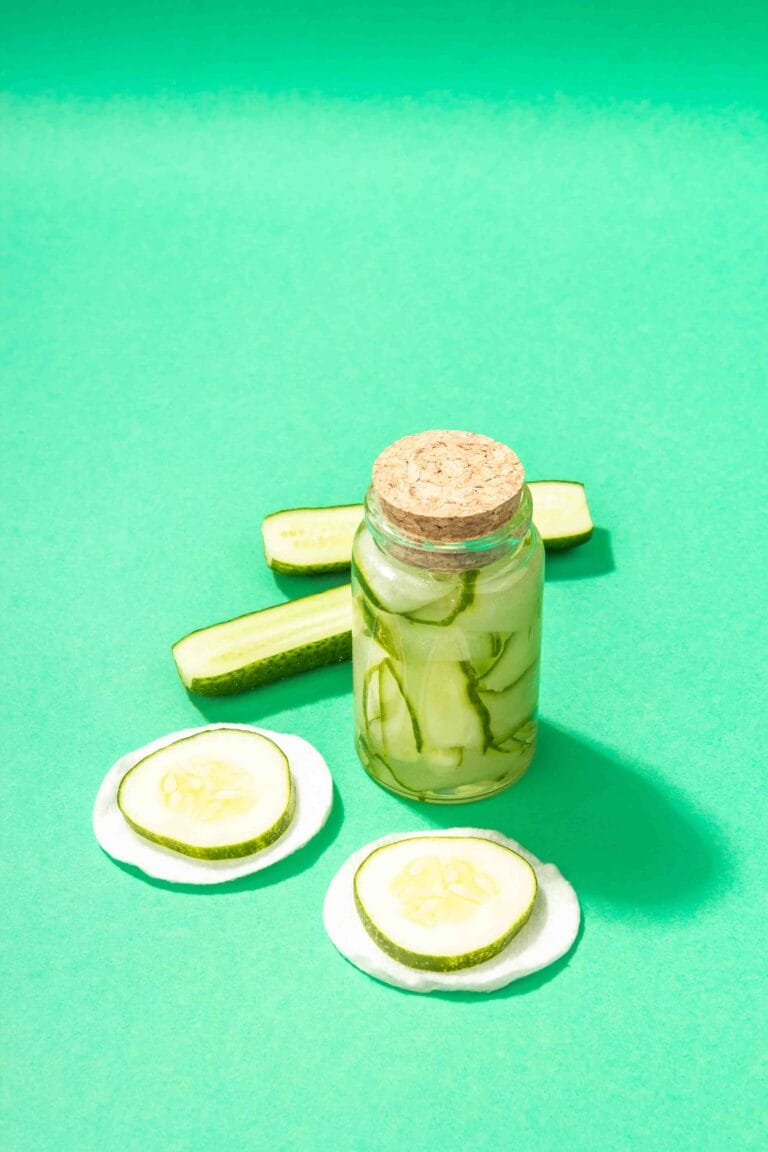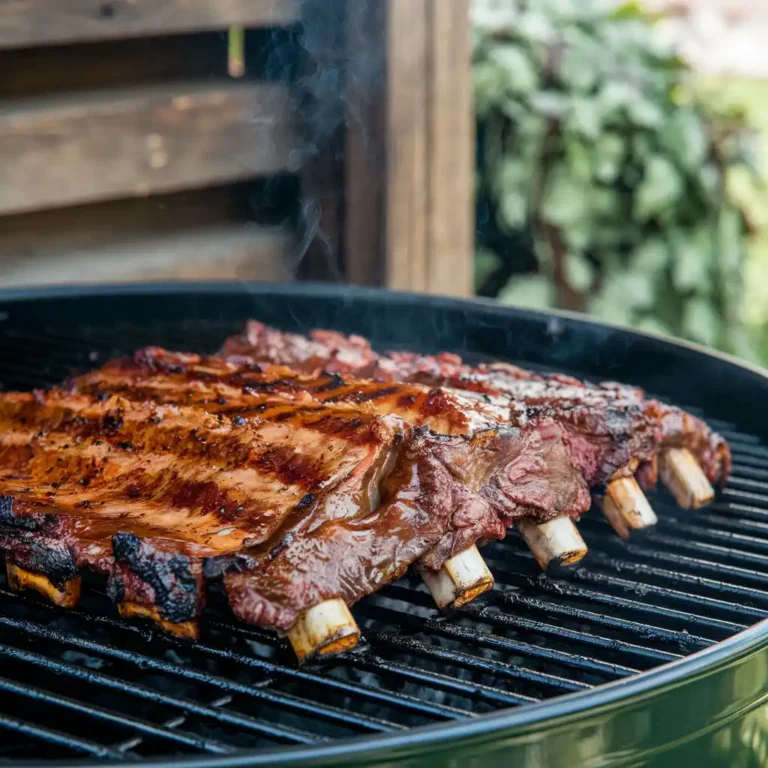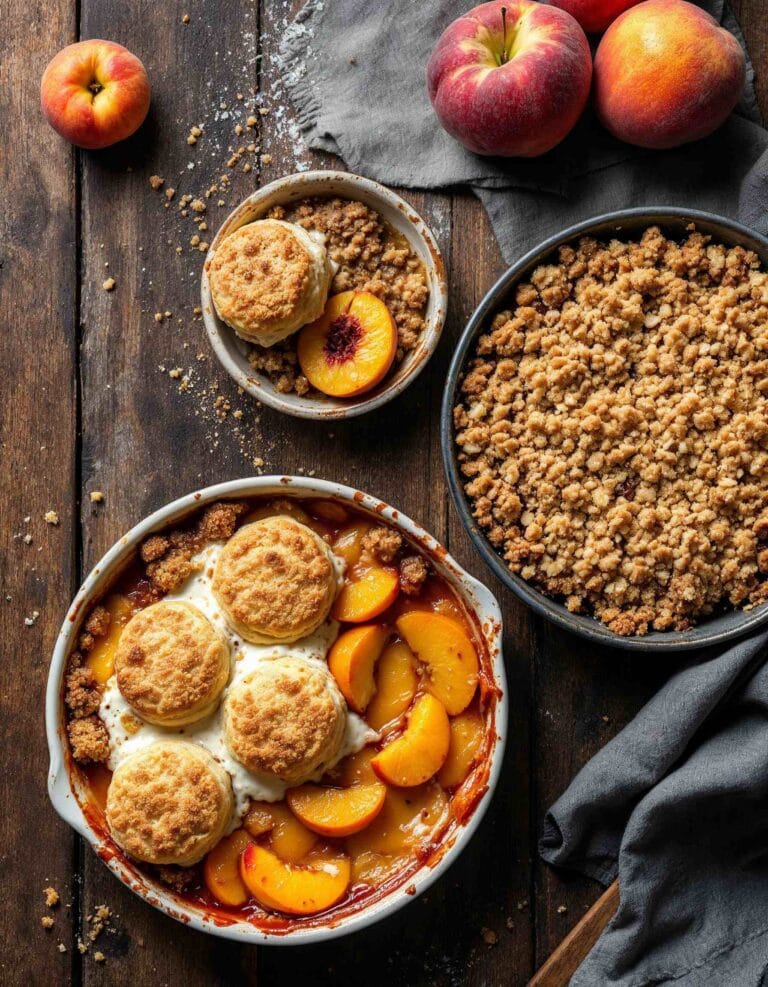Homemade Fish Food Recipe: Nutritious & Easy DIY Guide for Healthy Fish
Ensuring your aquarium fish receive a balanced and nutritious diet is key to their health and vibrant appearance. While commercial fish food is convenient, it may not always meet the unique dietary needs of specific fish species. That’s where homemade fish food comes into play, allowing you to craft meals tailored to the exact nutritional requirements of your fish.
Creating fish food at home can be surprisingly easy, cost-effective, and rewarding. Whether you’re catering to herbivorous, carnivorous, or omnivorous fish, you can control the ingredients and avoid harmful additives. In this article, we’ll explore everything from understanding the dietary needs of different fish types to preparing and storing homemade recipes that your aquatic pets will love.
By the end of this guide, you’ll have all the tools to create fish food that promotes growth, enhances colors, and supports the overall well-being of your underwater companions.
Understanding Fish Dietary Needs
To craft the perfect fish food recipe, it’s crucial to understand the dietary requirements of the fish species in your aquarium. Fish can generally be categorized into three dietary groups: herbivores, carnivores, and omnivores. Each group has unique nutritional needs that influence the choice of ingredients in your homemade recipes.
Herbivorous Fish Nutritional Needs
Herbivorous fish, such as plecos and many species of cichlids, thrive on plant-based diets. Their digestive systems are designed to break down fibrous materials found in algae, aquatic plants, and vegetables.
Key Nutrients for Herbivores
- Fiber: Essential for digestion and maintaining gut health. Sources include spinach, kale, and zucchini.
- Vitamins: Especially Vitamin A and C, found in vegetables like carrots and bell peppers.
- Plant-Based Proteins: Sourced from spirulina or soybeans to support growth and repair.
Carnivorous Fish Protein Requirements
Carnivorous fish, such as bettas and some catfish species, require high-protein diets to thrive. Their natural diet in the wild often consists of insects, small fish, and crustaceans.
Key Nutrients for Carnivores
- High-Quality Proteins: Found in shrimp, fish fillets, and krill. These provide essential amino acids for muscle development.
- Omega-3 Fatty Acids: Support brain function and immune health, available in fish oils and certain seafood.
- Calcium: Necessary for bone health, sourced from crushed shells or calcium-rich food additives.
Omnivorous Fish Diet Balance
Omnivorous fish, like guppies and mollies, require a mix of plant-based and protein-rich foods. Their versatility makes them easier to feed, but a balanced diet is still essential to prevent nutritional deficiencies.
Key Nutrients for Omnivores
- Combination of Proteins and Vegetables: Include a mix of shrimp, fish fillets, and leafy greens.
- Micronutrients: Selenium, magnesium, and zinc are important for maintaining vitality and coloration.
- Variety: Omnivorous fish benefit from diverse diets, ensuring they get a wide range of nutrients.
Tailoring Diets to Specific Fish
Different species within the same dietary group may have additional requirements. For example, goldfish require more carbohydrates than other omnivores, while discus fish benefit from diets rich in beef heart and specialized supplements. Researching the specific needs of your fish species ensures your homemade recipes meet their exact requirements.
Ingredients for Homemade Fish Food
Creating nutritious fish food starts with selecting the right ingredients. These components vary depending on whether you’re preparing food for herbivorous, carnivorous, or omnivorous fish. In this section, we’ll explore the essential building blocks of homemade fish food, including vegetables, proteins, and supplements.
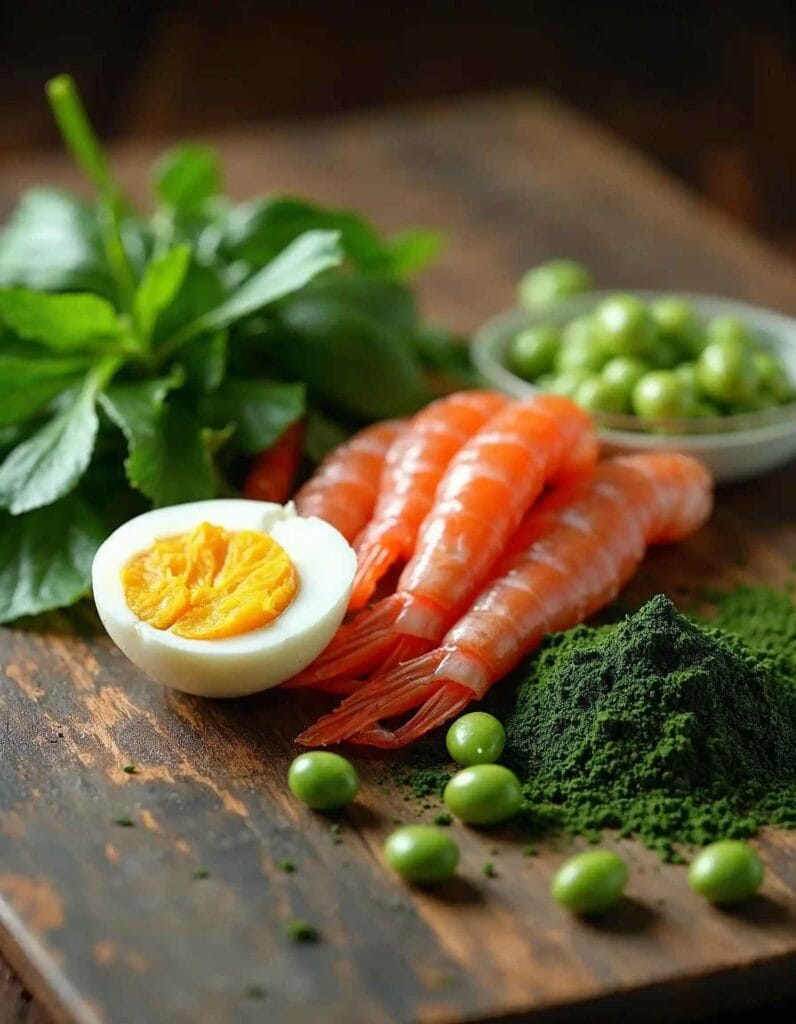
Vegetables for Herbivorous and Omnivorous Fish
Vegetables form the cornerstone of diets for herbivorous fish and are an excellent addition for omnivorous species. These ingredients are rich in fiber, vitamins, and minerals that promote digestion and overall health.
Best Vegetables for Fish Food
- Spinach: High in iron, Vitamin C, and calcium, spinach helps strengthen bones and improve immunity.
- Zucchini: A soft-textured vegetable that’s easy for fish to eat and digest. It’s packed with Vitamin A.
- Carrots: Loaded with beta-carotene, which enhances the vibrant colors of your fish.
- Peas: A go-to choice for preventing constipation in fish, peas are a rich source of fiber.
Preparation Tips for Vegetables
- Blanching: Lightly boiling vegetables helps soften them, making it easier for fish to consume.
- Peeling: Removing tough skins (like on zucchini or peas) prevents digestive issues.
- Blending: For herbivorous fish, blending vegetables into a smooth paste ensures even distribution in the final recipe.
Protein Sources for Carnivorous and Omnivorous Fish
Proteins are critical for carnivorous fish and a necessary supplement for omnivorous diets. Using high-quality, fresh proteins ensures your fish receive the amino acids needed for growth, repair, and energy.
Best Protein Sources
- Shrimp: A popular choice rich in omega-3 fatty acids and easily digestible proteins.
- White Fish Fillets: Mild-flavored options like tilapia or cod are safe and nutritious.
- Eggs: An excellent source of protein and fat, useful for binding ingredients together.
- Earthworms: A natural treat, earthworms are rich in protein and essential nutrients.
Handling Proteins Safely
- Freezing Fresh Seafood: Always freeze shrimp, fish fillets, or worms for 24–48 hours to eliminate potential parasites.
- Chopping or Grinding: Ensure proteins are finely chopped or blended to suit the size of your fish.
Supplements for Enhanced Nutrition
To ensure your homemade fish food meets all dietary needs, adding supplements is highly recommended. These enhance the nutritional value and address specific deficiencies.
Commonly Used Supplements
- Spirulina Powder: A nutrient-dense algae that’s a great addition for herbivorous and omnivorous fish.
- Fish Oil: Provides omega-3 fatty acids for brain and immune health.
- Calcium: Crushed eggshells or cuttlebone shavings help maintain strong bones.
- Vitamins: Liquid fish vitamins, available at pet stores, can be added to food mixtures for an extra boost.
Avoiding Harmful Ingredients
While many household ingredients are safe, some can be harmful or even toxic to fish. Avoid the following:
- Spices: Ingredients like garlic can be beneficial in small doses but should never contain added spices or salt.
- Fatty Meats: High-fat animal products like pork or beef can disrupt digestion.
- Processed Foods: Avoid bread, pasta, or any processed human food that lacks nutritional value for fish.
Preparing Fish Food
Preparing homemade fish food involves combining the selected ingredients, processing them into a fish-friendly form, and portioning them for easy feeding. This section outlines the step-by-step process for creating fish food that’s both nutritious and easy to store.
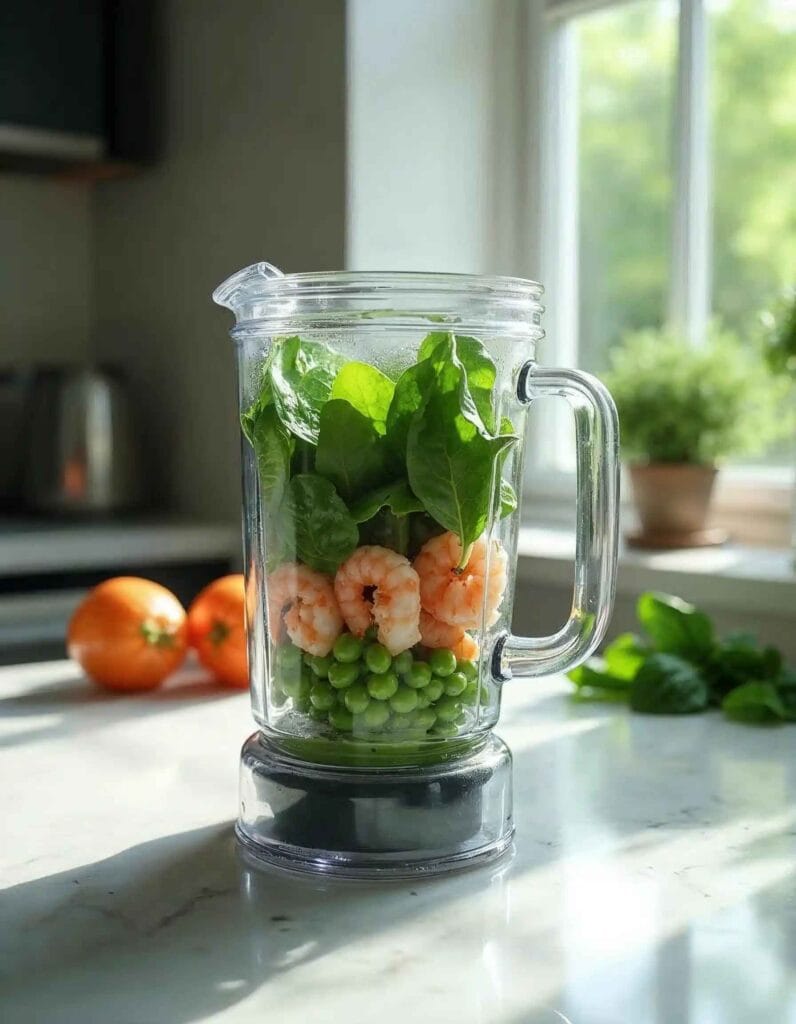
Step-by-Step Guide to Preparing Fish Food
Step 1 – Gather and Measure Ingredients
Start by selecting ingredients based on your fish’s dietary needs. For instance:
- Herbivorous Fish: Spinach, zucchini, spirulina powder, and peas.
- Carnivorous Fish: Shrimp, fish fillets, and egg.
- Omnivorous Fish: A mix of proteins (e.g., shrimp) and vegetables (e.g., carrots, spinach).
Measure the ingredients carefully to ensure a balanced mix. A typical ratio is:
- Herbivores: 70% vegetables, 30% supplements (like spirulina).
- Carnivores: 60% protein, 20% vegetables, 20% supplements.
- Omnivores: 50% protein, 40% vegetables, 10% supplements.
Step 2 – Blanch and Prepare Vegetables
Blanch the vegetables to soften them and retain their nutritional value.
- Boil a pot of water and add the vegetables for 1–2 minutes.
- Immediately transfer the vegetables to cold water to stop cooking.
- Peel tougher vegetables, such as peas or zucchini, if necessary.
Blend the vegetables into a smooth paste for easy consumption by fish.
Step 3 – Process Protein Ingredients
Prepare protein sources by:
- Chopping: Cut shrimp, fish fillets, or worms into small pieces suitable for the size of your fish.
- Blending: For smaller fish, blend the protein into a paste for easier digestion.
- Eggs: Boil and mash eggs or use raw egg yolk as a binding agent.
Combining Ingredients
Step 4 – Mix Ingredients Thoroughly
Combine the vegetable paste, protein sources, and supplements in a large mixing bowl.
- Add a small amount of water if the mixture is too thick.
- Ensure an even consistency so every portion contains balanced nutrition.
Step 5 – Bind the Mixture
Use gelatin or agar-agar to bind the mixture together:
- Dissolve gelatin in hot water according to package instructions.
- Mix the gelatin into the blended fish food to create a firm consistency.
- Spread the mixture onto a flat surface or pour it into molds for portioning.
Cooking and Portioning
Step 6 – Cook (Optional)
Cooking is not always necessary, but lightly steaming or baking the food can:
- Extend its shelf life.
- Enhance the digestibility of certain ingredients.
Step 7 – Portion for Daily Feeding
Divide the fish food mixture into small portions to prevent overfeeding:
- Use ice cube trays or silicone molds to create bite-sized portions.
- Freeze the portions to preserve freshness and nutrients.
Customizing Texture for Fish Size
Fish food texture matters, especially for smaller species:
- Large Fish: Keep some chunks or larger pieces in the mix.
- Small or Fry Fish: Blend the mixture to a finer paste for ease of eating.
Storing Homemade Fish Food
Proper storage of homemade fish food is essential to maintain its nutritional value and prevent spoilage. This section will guide you through effective freezing, portioning, and storage techniques to ensure your fish food remains fresh and safe for your aquatic pets.
Freezing Fish Food for Longevity
Freezing is the most effective way to store homemade fish food and retain its nutrients. It allows you to prepare larger batches while minimizing waste.
Steps for Freezing Fish Food
- Use Silicone Molds or Ice Cube Trays:
- Pour the prepared mixture into molds or trays for individual portions.
- Silicone molds make it easier to remove the frozen pieces.
- Freeze Quickly:
- Place the trays in the freezer immediately to avoid bacterial growth.
- Ensure the freezer temperature is set to 0°F (-18°C) or lower.
- Transfer to Airtight Containers:
- Once frozen solid, remove the portions from the trays and transfer them to resealable freezer bags or airtight containers.
- Label the containers with the preparation date.
Shelf Life of Frozen Fish Food
- Frozen fish food can typically last up to 3 months without significant loss of nutrients.
- Avoid using food that shows signs of freezer burn or discoloration, as this may indicate spoilage.
Daily Usage and Portion Control
Proper portioning prevents overfeeding and ensures your fish consume fresh food every day.
Feeding Guidelines
- Thaw one portion of frozen food before feeding.
- To thaw, place the food in a small cup of aquarium water for 10–15 minutes.
- Do not use hot water, as it can degrade nutrients.
- Feed only what your fish can consume within 2–3 minutes.
Storing Thawed Food
- If you accidentally thaw more than needed, refrigerate the excess for up to 24 hours.
- Discard any uneaten food after 24 hours to avoid contamination.
Avoiding Spoilage
To ensure the safety of your fish, take precautions against spoilage:
- Inspect Before Use: Check for signs of mold, unusual odors, or discoloration before feeding.
- Avoid Repeated Thawing: Thawing and refreezing can lead to bacterial growth.
- Seal Properly: Airtight containers prevent freezer odors and contamination.
Alternatives to Freezing
While freezing is the most common method, some aquarists prefer dehydrating fish food for long-term storage.
- Dehydrators or Ovens: Use a low-heat setting to remove moisture from the mixture.
- Storage: Store the dehydrated food in a cool, dark place in airtight jars.
However, dehydrated food may not retain the same level of nutrients as frozen food and may require rehydration before feeding.
Recipes for Different Fish Types
Homemade fish food can be customized to meet the specific dietary needs of herbivorous, carnivorous, and omnivorous fish. Below, we provide easy-to-follow recipes for each category, using commonly available ingredients.
Recipe for Herbivorous Fish
Ingredients
- 1 cup spinach (blanched)
- 1 cup zucchini (blanched and peeled)
- 1/2 cup peas (blanched and peeled)
- 2 tablespoons spirulina powder
- 1 teaspoon fish vitamins (optional)
- 1/4 cup gelatin (for binding)
Instructions
- Prepare the Vegetables:
- Blanch the spinach, zucchini, and peas.
- Blend them into a smooth paste.
- Mix the Spirulina:
- Add spirulina powder to the vegetable paste and mix thoroughly.
- Bind with Gelatin:
- Dissolve the gelatin in hot water and mix it into the paste.
- Portion and Freeze:
- Pour the mixture into ice cube trays or silicone molds and freeze.
This recipe provides fiber, essential vitamins, and minerals for optimal herbivorous fish health.
Recipe for Carnivorous Fish
Ingredients
- 1 cup shrimp (chopped)
- 1/2 cup white fish fillet (chopped)
- 1 boiled egg yolk
- 1 teaspoon fish oil (optional)
- 1/4 cup gelatin (for binding)
Instructions
- Prepare the Proteins:
- Chop the shrimp and fish fillets into small pieces.
- Blend them into a paste with the boiled egg yolk.
- Add Fish Oil:
- Mix fish oil into the protein paste for added omega-3s.
- Bind with Gelatin:
- Dissolve the gelatin in hot water and stir it into the mixture.
- Portion and Freeze:
- Pour the mixture into molds and freeze for easy feeding.
This recipe is packed with high-quality protein and fats to support the growth and vitality of carnivorous fish.
Recipe for Omnivorous Fish
Ingredients
- 1/2 cup spinach (blanched)
- 1/2 cup zucchini (blanched and peeled)
- 1/2 cup shrimp (chopped)
- 1 boiled egg yolk
- 1 tablespoon spirulina powder
- 1/4 cup gelatin (for binding)
Instructions
- Blend Vegetables and Proteins:
- Blanch and blend the spinach and zucchini into a paste.
- Chop the shrimp and add it to the vegetable paste.
- Mix Supplements:
- Add the spirulina powder and egg yolk, blending until smooth.
- Bind and Freeze:
- Use dissolved gelatin to bind the mixture.
- Portion into molds and freeze.
This recipe offers a balanced mix of proteins and plant-based nutrients to cater to omnivorous fish.
Tips for Customizing Recipes
- For Small Fish or Fry: Blend the mixture into a finer paste and use smaller molds.
- For Color Enhancement: Add beta-carotene-rich ingredients like carrots or krill.
- For Species-Specific Needs: Research your fish species and tweak the ingredients accordingly (e.g., goldfish thrive on carbohydrate-rich diets).
FAQs
What is the best homemade food for fish?
The best homemade food for fish depends on the type of fish you have. For herbivorous fish, a vegetable-based recipe using ingredients like spinach, zucchini, and spirulina powder is ideal. For carnivorous fish, a high-protein mix of shrimp, fish fillets, and egg yolk works best. Omnivorous fish benefit from a balanced combination of vegetables and protein sources.
The key is tailoring the food to the specific dietary needs of your fish species, ensuring they get the necessary nutrients for growth, vibrant colors, and good health.
How to make homemade fish feed?
To make homemade fish feed, follow these steps:
- Identify Your Fish’s Dietary Needs: Determine if your fish are herbivores, carnivores, or omnivores.
- Select Ingredients: Use fresh vegetables, proteins, and supplements tailored to your fish’s requirements.
- Prepare Ingredients: Blanch vegetables, chop proteins, and blend them into a paste.
- Bind the Mixture: Use gelatin or agar-agar to create a firm texture.
- Portion and Store: Freeze the food in small portions using ice cube trays or molds for easy feeding.
This ensures your homemade fish food is nutritious, fresh, and easy to serve.
What are the best ingredients for fish food?
The best ingredients for fish food vary based on your fish’s dietary preferences:
- Herbivorous Fish: Spinach, peas, zucchini, kale, spirulina powder.
- Carnivorous Fish: Shrimp, fish fillets, krill, boiled egg yolk, fish oil.
- Omnivorous Fish: A combination of vegetables (spinach, carrots) and proteins (shrimp, white fish).
Additional supplements like liquid fish vitamins, calcium (from cuttlebone), and beta-carotene-rich foods can enhance the nutritional value of your recipes. Avoid harmful ingredients like processed foods, spices, and fatty meats.
How to make live food for fish?
Live food is an excellent supplement for many fish species, mimicking their natural diet and stimulating hunting instincts. Here’s how to make or cultivate live food:
- Brine Shrimp:
- Purchase brine shrimp eggs and hatch them in saltwater using a small air pump.
- Harvest the nauplii (young shrimp) after 24–48 hours.
- Daphnia (Water Fleas):
- Cultivate daphnia in a tank filled with aged water and a small amount of green algae or yeast as food.
- Harvest them using a fine net for feeding.
- Microworms:
- Prepare a culture medium with oatmeal or mashed potatoes.
- Introduce microworm starter cultures, and harvest them as they multiply.
- Earthworms:
- Keep earthworms in moist soil and feed them vegetable scraps.
- Wash thoroughly before feeding to fish.
Live food is especially beneficial for carnivorous and omnivorous fish but should be given in moderation to avoid dependency.
Conclusion
Creating homemade fish food is a rewarding way to ensure your aquatic pets receive a diet tailored to their specific nutritional needs. By understanding the dietary requirements of herbivorous, carnivorous, and omnivorous fish, selecting high-quality ingredients, and following simple preparation methods, you can provide food that promotes growth, enhances color, and supports overall health.
Homemade fish food not only allows you to control the quality of what your fish consume but also reduces reliance on commercial options that may contain unnecessary fillers or additives. Whether you’re blending vegetables for herbivores, mixing proteins for carnivores, or balancing a diet for omnivores, the process can be customized to suit your fish species.
Additionally, with proper storage techniques, such as freezing or dehydrating, you can prepare large batches of food that are convenient and long-lasting. Experimenting with different recipes and even introducing live food can further enrich your fish’s diet.
Remember, the key to success lies in understanding your fish’s needs and providing variety to keep them healthy and happy. Dive into the world of homemade fish food, and watch your underwater companions thrive like never before!

